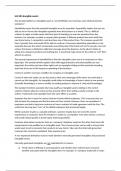Summary
Intangible assets summary
- Course
- Institution
Presenting a concise summary of the most important elements of Intangibles by focussing on the definition mainly, real world phenomena and much much more. The notes are primarily intended for a beginner to intermediate level.
[Show more]



